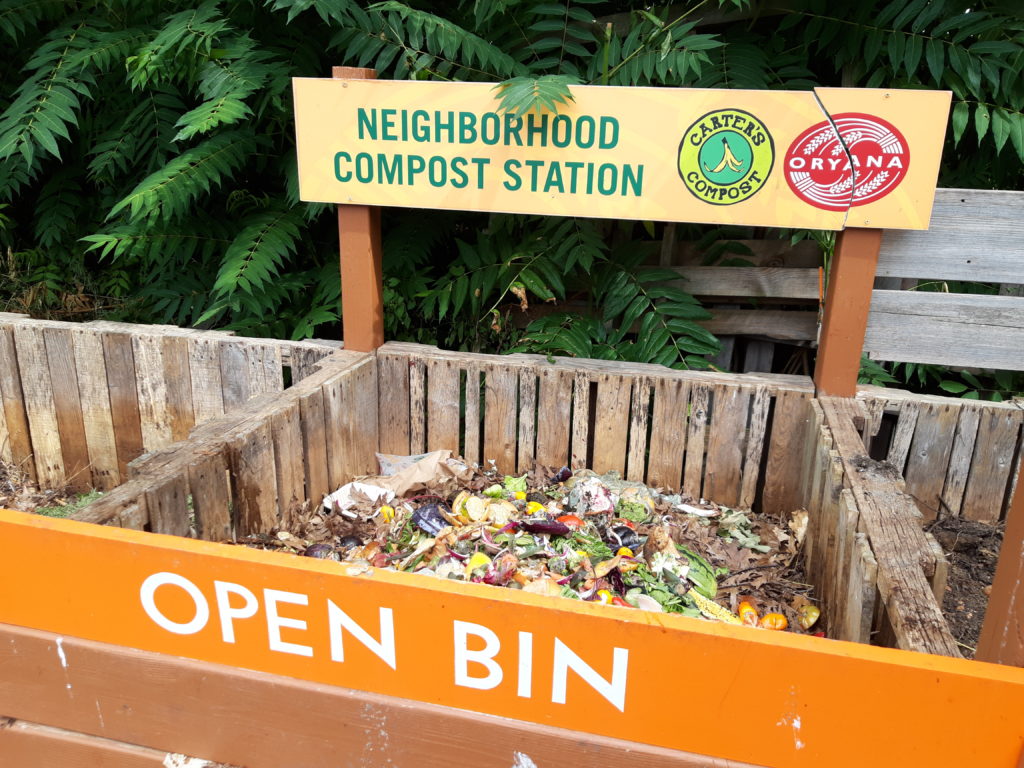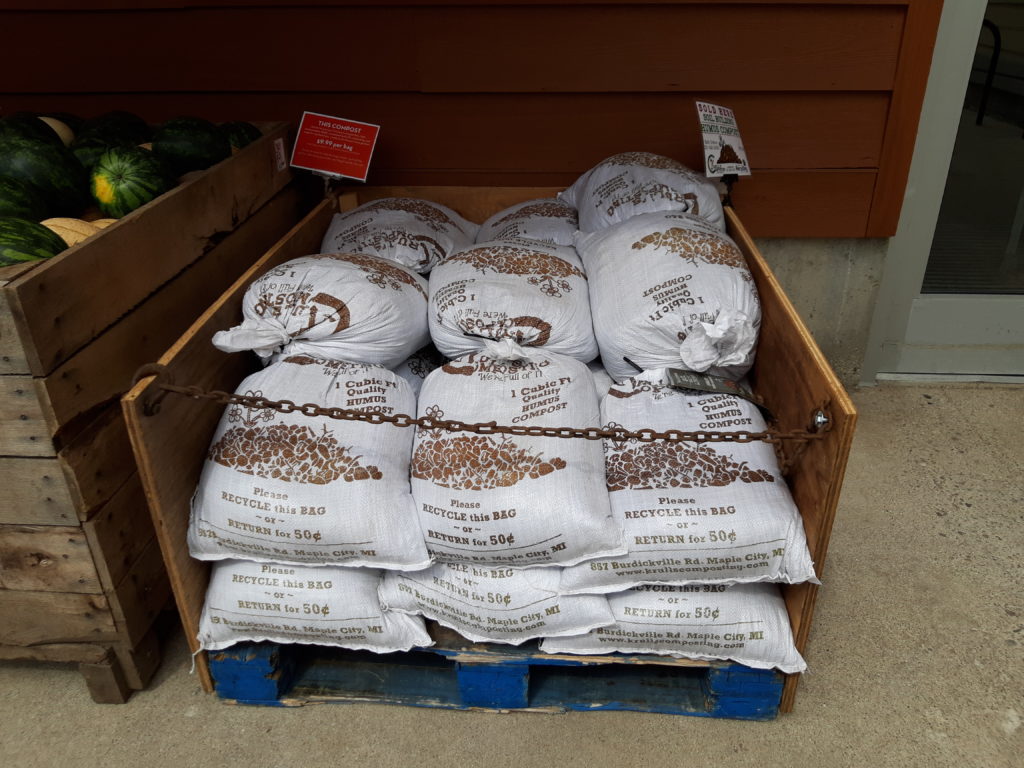Only You Can Help Oryana Compost Better!

by Will Nichols, SEEDS Volunteer
According to the EPA, food waste accounts for 15% of the municipal waste stream; that is 36 million tons of food waste headed to the landfill each year in the U.S. In high-income countries, like the U.S., 35% of food waste is thrown out by consumers. SEEDS has been actively encouraging and supporting Zero Waste targets in the community. Over the last year we’ve been honored to work with Oryana, a company that consistently strives to be ever-better stewards of the environment. One project focus has been to reduce waste going to the landfill.
For over a decade, Oryana has hosted a compost operation in its parking lot and made it available to community members. In a compost pile, food scraps are naturally broken down creating a healthy, nutrient-packed fertilizer called humus. Then, at the end of each season, Oryana has offeredmembers a share of this rich fertilizer to use for their own gardens to complete nature’s cycle. In order to maximize the benefits of food composting it is essential to follow several simple rules when adding food scraps to the Co-op community compost pile.
The Oryana public compost pile eats a vegan, no-fat diet
The Oryana compost pile is intended to be low-maintenance and allow mother nature to do the work with thehelp of SEEDS Youth Conservation Corps (www.ecoseeds.org). A compost pile is really just a big digestion system and just like any digestion system it is essential to “eat”the right food in order to stayhealthy and happy. Thiscompost pile is designed to eat only a vegan, no-fat diet. This means vegetable and fruit scraps, rice, potato peels, coffee grounds and similar foods are all great. On the other hand, we can NOT add meat, eggs, dairy, anything very spicy, anything oily or greasy or it will cause our compost pile to have some smelly indigestion. Also, do NOT add yard waste, pet waste, paper or “compostable” dinner wares. While all of these things can be composted with industrial methods, such as those used by Bay Area Recycling for Charities, theCo-op compost pile is NOT equipped to handle them. Of course, do NOT add any industrial chemicals, plastics, metal, glass or other non-food materials. Feeding the compost pile is a lot like feeding a pet rabbit or hamster!
How composting works
To understand why only certain organic materials can be added to our pile it is useful to look at how composting works. Like our own digestive system, the compost pile needs three things: microbes, food and oxygen. When food scraps are added to the compost pile, native microbes move in immediately. The microbes break down the complex food molecules into simpler molecules and minerals forming what is called humus, a rich, nutrient-filled fertilizer. To keep the process humming along, it’s necessary to turn the pile periodically in order to work in a fresh supply of oxygen and stoke the microbe’s digestive engines. It generally takes about 3 to 6 months for the little microbes to completely digest food scraps producing a rich humus ready to enrich your soil.
This simple management style works well for composting fruits and vegetables, however, for many other organic materials the temperature is too low to break them down fully. At low temperatures, the proteins in meats and eggs putrefy to ammonia compounds; fats and dairy become rancid in the pile and the dense fibers in yard waste, paper and compostable dinnerware require more than a year to break down fully. Larger-scale, intensively managed compost piles reach higher temperatures with more frequent pile turnings and heat tolerant microbes that are able to compost a much wider range of materials. In our region, Bay Area Recycling for Charities (mybarc.org/composting/) provides these high-temperature composting services, which Oryana uses to process the compost collected from the Cafe including used dinnerware.
Why composting matters
One vital benefit of composting is that the nutrients and minerals taken from the soil by growing fruit and vegetable plants are returned once again replenishing and enriching soil. Adding compost not only replaces the need for chemical fertilizers, but also helps build soil texture and retain moisture making the soil more drought tolerant. Anothermajor benefit of composting is the reduction of greenhouse gas emissions and loweringour carbon footprint. Preventing food waste globally is considered by the scientists of Drawdownthe third most impactful action to reverse global warming![1]The EPA estimates that for every ton of food waste that is composted instead of landfilled, 0.72 tons of carbon dioxide equivalent is saved from the atmosphere. To put that into perspective, each pound of food scraps we compost instead of landfillsaves enough greenhouse gases to fill 8 party balloons. And that’s cause to celebrate!

You know how we also compost everything from the cafe and produce department? Well, here is the result! Rich humus soil that you can spread on your garden! All those useful scraps were collected by Bay Area Recycling for Charities and went to Krull’s Composting in Maple City. These bags of compost are located outside at the south entrance. When purchasing, just let the cashier know you want a bag. You don’t have to bring the bag inside. They are heavy!)